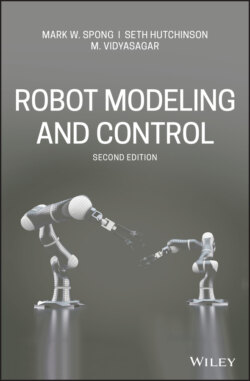Читать книгу Robot Modeling and Control - Mark W. Spong - Страница 41
Chapter 8: Independent Joint Control
ОглавлениеOnce reference trajectories for the robot are specified, it is the task of the control system to track them. In Chapter 8 we discuss the motion control problem. We treat the twin problems of tracking and disturbance rejection, which are to determine the control inputs necessary to follow, or track, a reference trajectory, while simultaneously rejecting disturbances due to unmodeled dynamic effects such as friction and noise. We first model the actuator and drive-train dynamics and discuss the design of independent joint control algorithms.
A block diagram of a single-input/single-output (SISO) feedback control system is shown in Figure 1.23. We detail the standard approaches to robot control based on both frequency domain and state space techniques. We also introduce the notion of feedforward control for tracking time-varying trajectories. We also introduce the fundamental notion of computed torque, which is a feedforward disturbance cancellation scheme.
Figure 1.23 Basic structure of a feedback control system. The compensator measures the error between a reference and a measured output and produces a signal to the plant that is designed to drive the error to zero despite the presences of disturbances.
